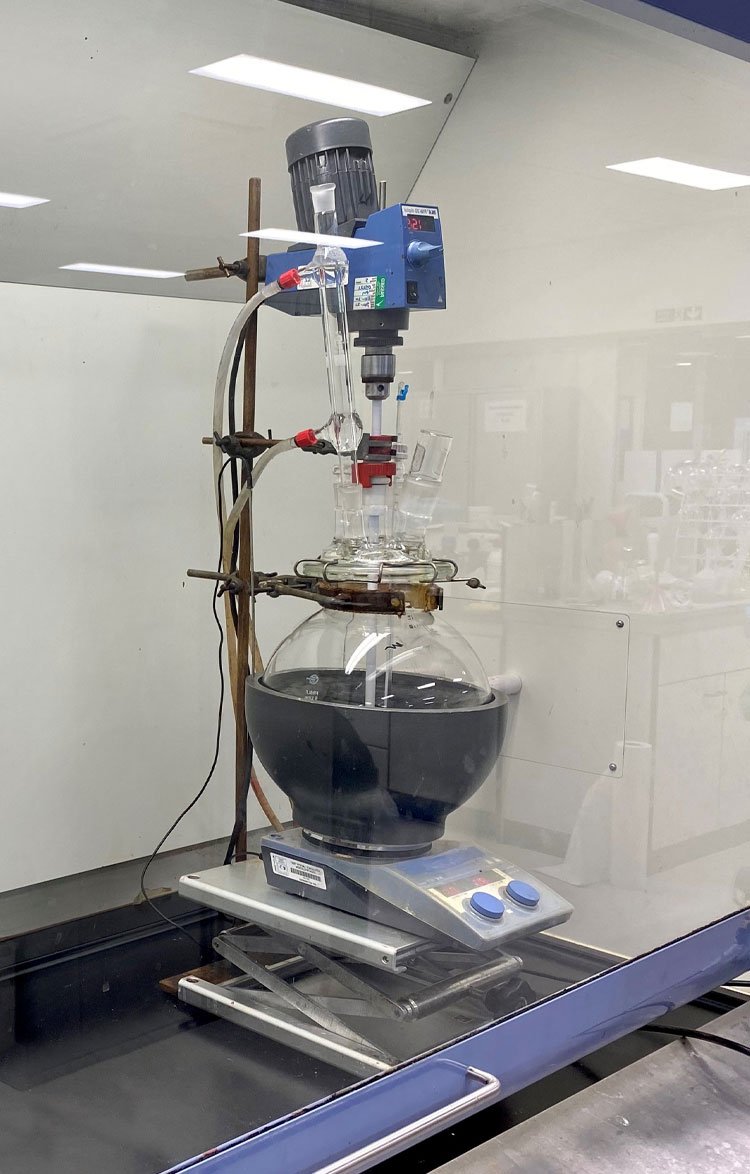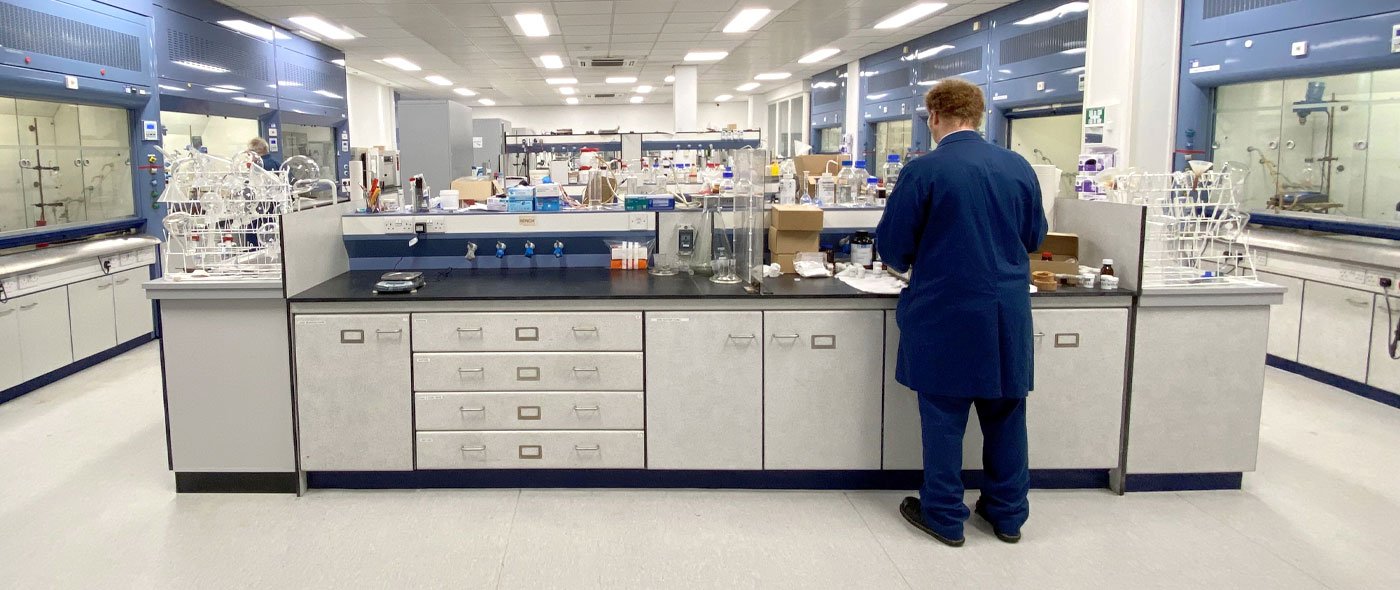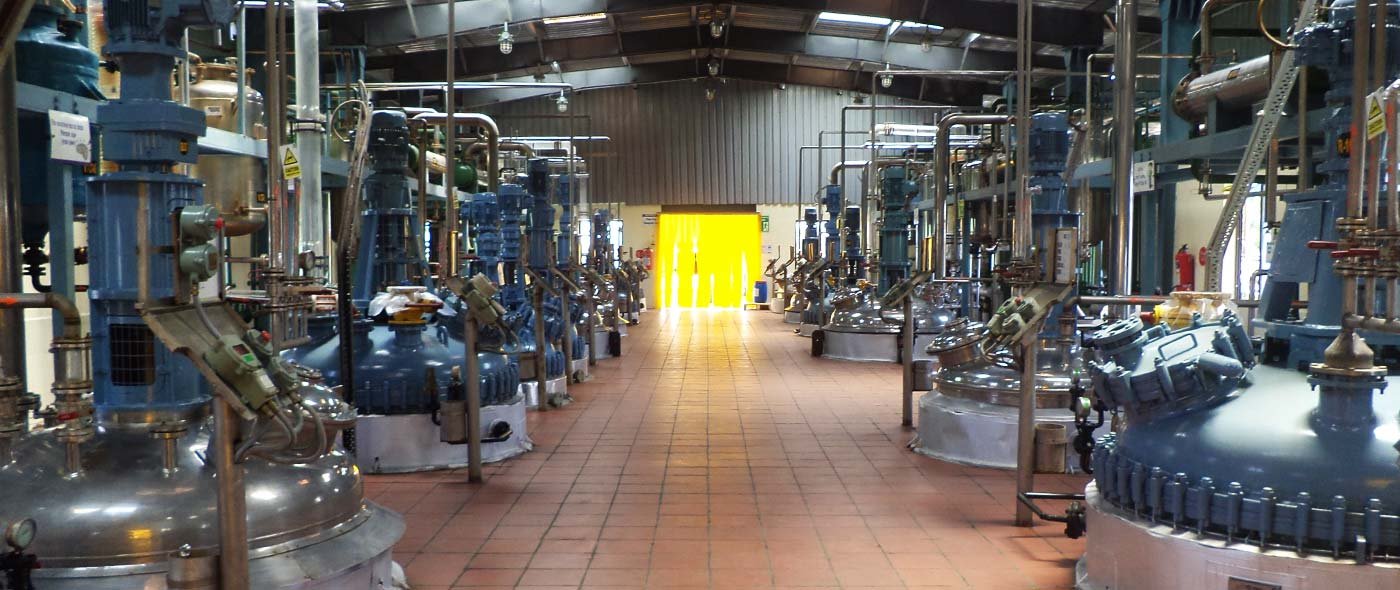Science humbles us, excites us and leads us to innovate!
Hundred plus years of this fabulous journey has resulted in state of art laboratories, processes, products and patents. Our Ingredients are broadly categorised as Synthetic or Natural by underlying Technology platform and source of key starting raw material. Innovation at James Robinson is primarily driven by consumer trends; new ingredients are introduced by exploring synergistic Chemistries & Application capabilities.

Synthetic Chemistry
Synthetic Ingredients are derived by the following traditional Organic chemical techniques with particular focus on Hydrogenation, Nitration and Diazotisation.
- Acetylation, Alkylation
- Blanc reaction, Bucherer reactions
- Carbamations, Coumarin synthesis
- Diazotization and coupling, Diazonium hydrolysis
- Expoxide preparation, Esterification
- Halogenatiom, Heterocyclic synthesis, Hydrogenation
- Nitration
- Stobbe reaction
- Ullman reaction
- Vilsmeir reaction
Synthesis starts at grams/kilogram scale in our well-equipped laboratory and work is supported by in-house high-pressure liquid chromatography, gas chromatography, FT-IR spectroscopy and UV-Vis spectrophotometry. This is then scaled up to commercial volumes at Bidar Manufacturing site.
- 3 production units, total 200KL reactor capacity
- Glass Lined : 630 L – 4KL, SS : 1KL – 8L
- Hydrogenation units : 3KL, 4KL, 8KL
- Distillation units
- Drying and packing units
- Spare land for rapid expansion
Natural Chemistry
Natural ingredients are derived from naturally occurring raw materials using bio technology and or extracting actives from botanicals.
Biotome: The Biotech and Life Sciences division of James Robinson Speciality Ingredients harnesses the nature of chemistry. It’s core focus is on developing sustainable, bio-based ingredients for the personal care market.
By combining bio-process development and our in-house microbiological expertise, our four scale-down bioreactors allow on-line analysis of dissolved oxygen, foaming, pH, stirrer speed and temperature. Built-in isocratic pumps enable the precise monitoring and control of process feedstocks.
Our off-line analysis includes optical density, sugar and carbohydrate analysis as well as product and intermediate analysis via HPLC. We’re licensed to handle hazard group 1 and 2 microorganisms as well as class 1 GMMs.
Our temperature, humidity and carbon dioxide controls allow handling of micro-organisms and cell cultures, and light microscopy with up to 1000x phase contrast – Which means we can efficiently capture images and carry out rapid cell counting.
The laboratory is equipped with DNA and protein gel electrophoresis, western blot capability and imaging capability to analyse protein stains and chemiluminescence for western blot analysis.
At JRSI, we also have expertise in botanical extractions.


Get in touch
The team at James Robinson are here to help.
If you have any questions or are in need of assistance, then please use the form on the right to get in touch and a member of the team will be in touch to help you as soon as possible.



